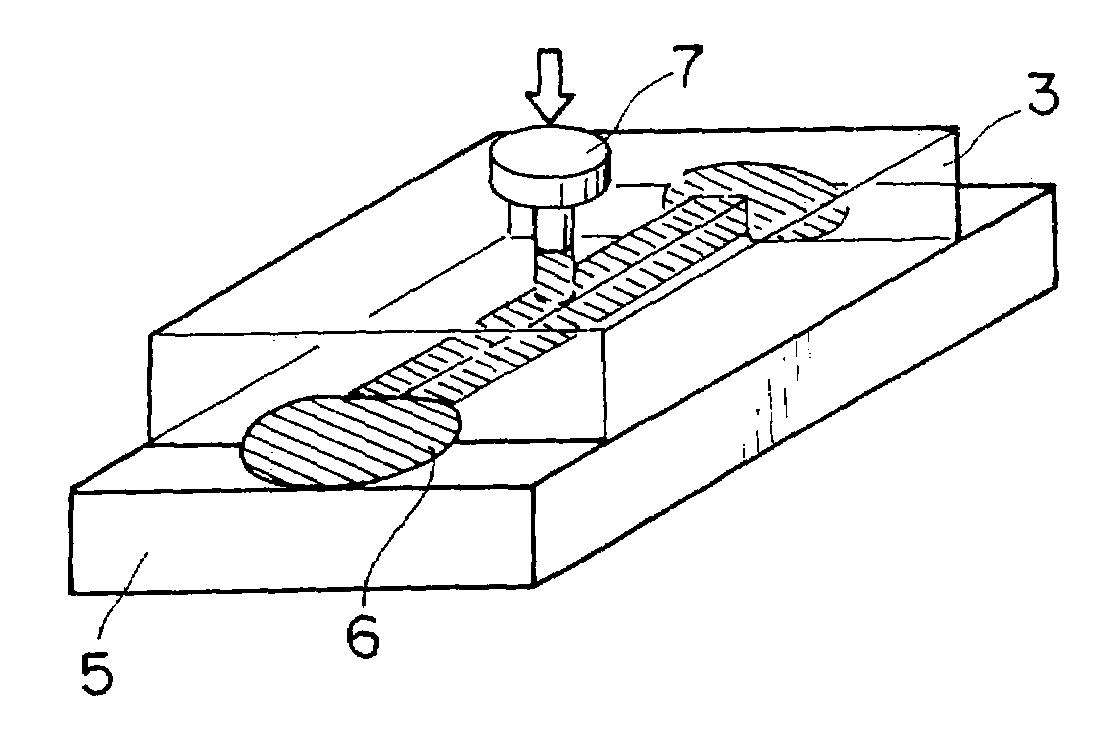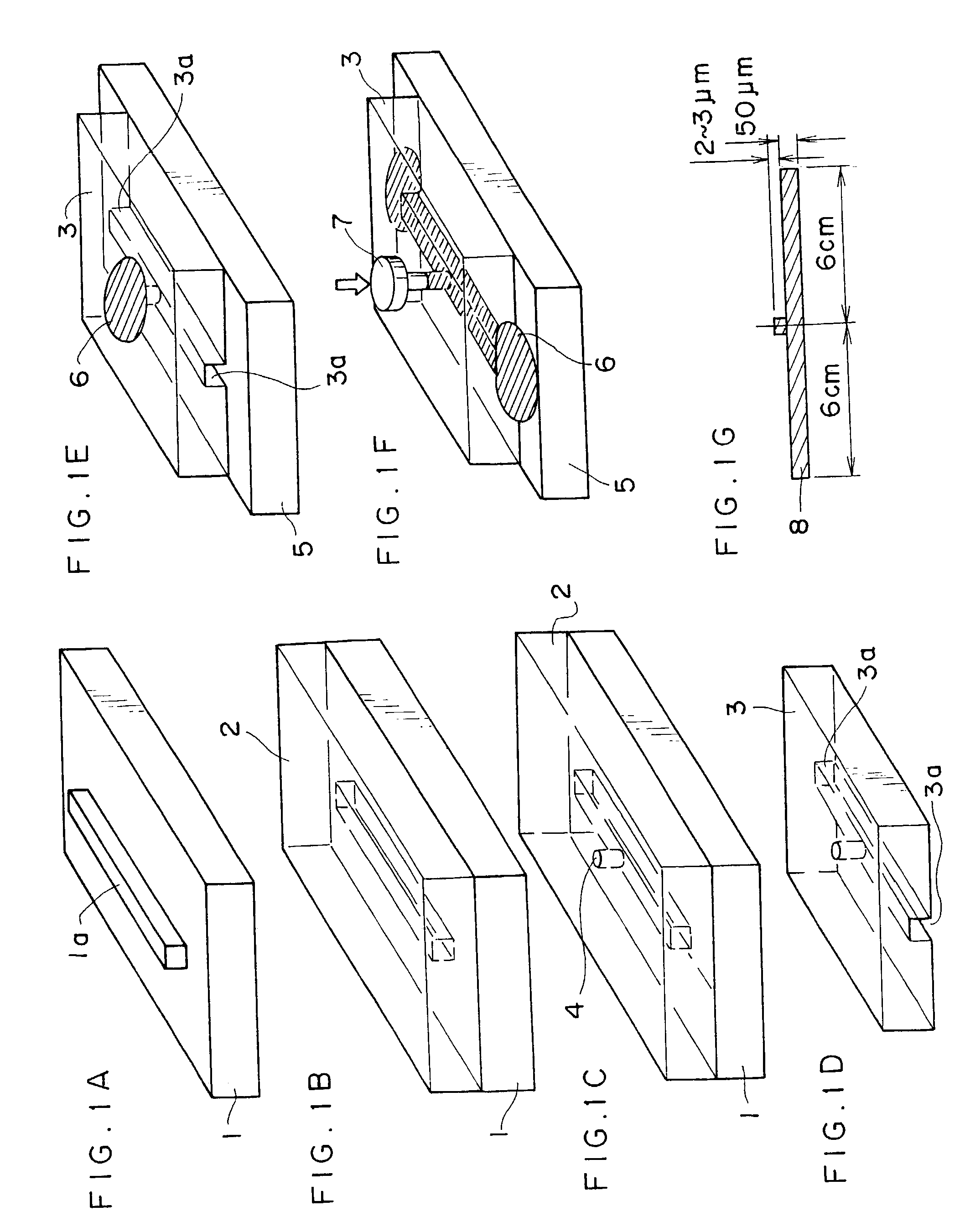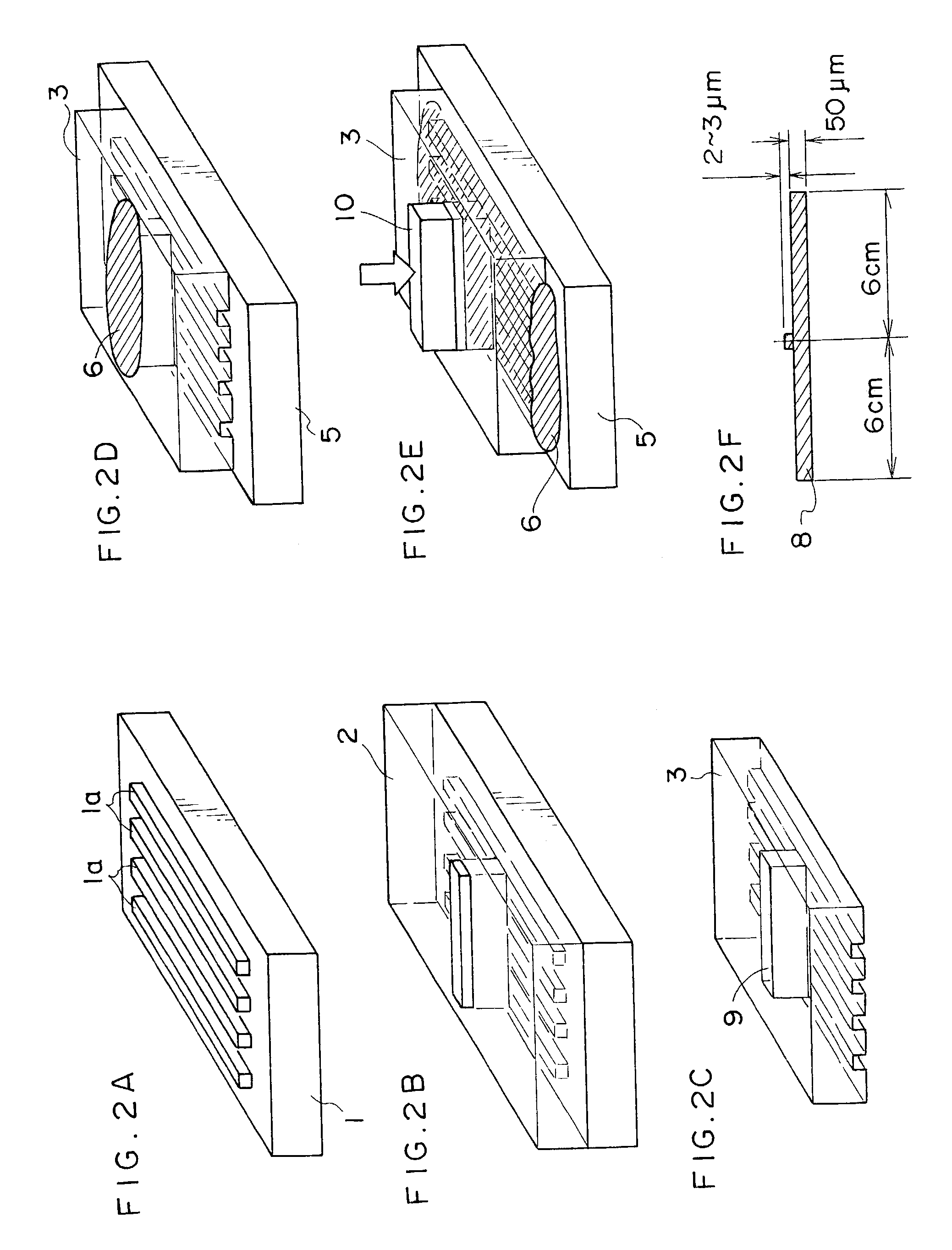Process for producing polymer optical waveguide
a technology of optical waveguides and polymers, applied in the field of optical waveguide production, can solve the problems of poor precision of the resultant core diameter, increased costs in the process, and insufficient refraction index difference, so as to reduce the loss of guided wave and low cost
- Summary
- Abstract
- Description
- Claims
- Application Information
AI Technical Summary
Benefits of technology
Problems solved by technology
Method used
Image
Examples
example 1
[0178]A thick film resist (SU-8, manufactured by Microchemical Corp.) was disposed on a Si substrate (diameter: 6 inches) by spin-coating, pre-baked at 80° C., exposed through a photomask to light, and then subjected to development, so as to form a convex portion having a length of 12 cm. Then, the resultant product was post-baked at 120° C. to give a master template for forming a core portion of an optical waveguide, which had a convex portion possessing a section having an area of 50 μm squared and a length of 12 cm.
[0179]Normal hexane as a releasing agent was coated on this master template, and then a heat-curable polydimethylsiloxane (PDMS) elastomer (SYLGARD 184, manufactured by Dow Corning Asia Ltd.) was poured into the master template. The resultant product was cured by heating at 120° C. for 30 minutes, and then the cured elastomer was peeled to form a template which had a concave portion corresponding to the convex portion having the square section and had a thickness of 1 ...
example 2
[0184]A polymer optical waveguide was produced in the same manner as in Example 1 except that in order to fill the UV-curable resin into the concave portion of the mold, the resin output portion was brought into contact with the UV-curable resin so as to be converted to a resin input portion, and the resin input port was converted to a resin output port.
[0185]The time for filling the UV-curable resin into the entirety of the concave portion of the mold in this case was about 2 minutes. The guided wave loss of this polymer optical waveguide was 0.35 dB / cm.
example 3
[0187]A master template for forming a branched optical core portion that had a section having an area of 50 μm squared was formed in the same manner as in Example 1. The structure of this core was two-way type as illustrated in FIG. 3. The length of the core in front of the branched portion was 5 cm, and the length in rear of the branched portion was 7 cm. The width of the optical waveguide immediately before the branched portion was 80 μm.
[0188]The master template and PDMS elastomer were used to form a mold having a concave portion that had a section having an area of 50 μm squared and a thickness of 1.5 mm in the same manner as in Example 1. Next, both ends of the mold were cut in such a manner that the concave portion was exposed, so as to form a resin output portion. Next, a hole having a diameter of 80 μm was opened at an optical waveguide branched portion in such a manner that the hole communicated from another surface opposite to the surface, with which a cladding substrate w...
PUM
| Property | Measurement | Unit |
|---|---|---|
| Time | aaaaa | aaaaa |
| Thickness | aaaaa | aaaaa |
| Adhesivity | aaaaa | aaaaa |
Abstract
Description
Claims
Application Information
 Login to View More
Login to View More - R&D
- Intellectual Property
- Life Sciences
- Materials
- Tech Scout
- Unparalleled Data Quality
- Higher Quality Content
- 60% Fewer Hallucinations
Browse by: Latest US Patents, China's latest patents, Technical Efficacy Thesaurus, Application Domain, Technology Topic, Popular Technical Reports.
© 2025 PatSnap. All rights reserved.Legal|Privacy policy|Modern Slavery Act Transparency Statement|Sitemap|About US| Contact US: help@patsnap.com



